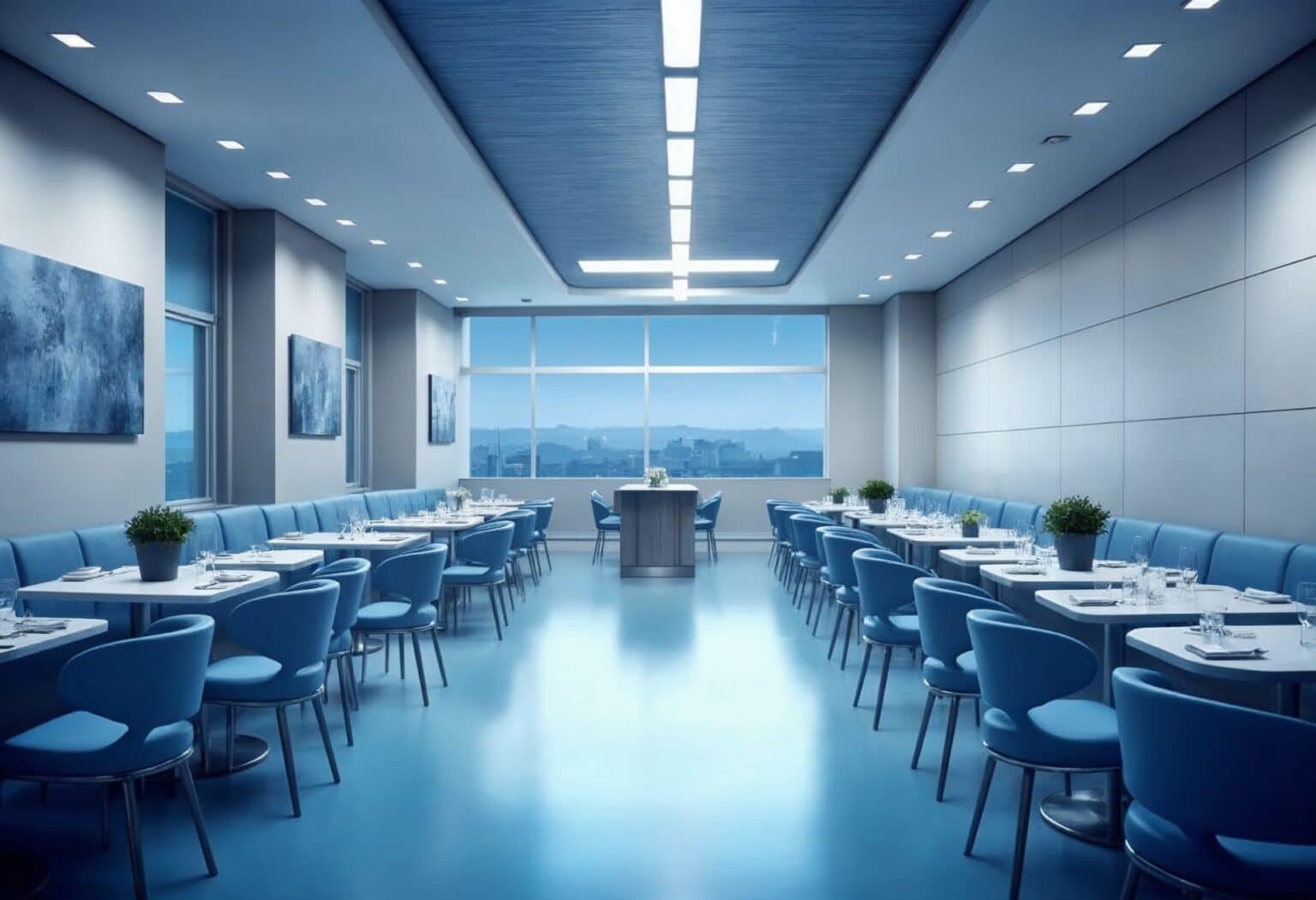As a restaurant, your website is often the first impression that potential diners have of your establishment. It’s not just a digital menu – it’s your storefront, your brand ambassador, and increasingly, your primary reservation and ordering platform. As we navigate 2025, the bar for restaurant web design has never been higher. Here are 10 essential tips to ensure your restaurant’s website converts hungry visitors into loyal customers. Here at Azuro Digital, we specialize in restaurant web design services and we’re heavily involved in the entire website strategy to ensure that your website outperforms the competition.
1. Make Your Menu the Star with Visual Hierarchy
Your menu isn’t just a list of dishes – it’s the heart of your website. In 2025, successful restaurant websites treat menu presentation as an art form. Use high-quality, professionally shot food photography that makes mouths water. Organize menu sections with clear visual hierarchy, allowing visitors to quickly scan categories like appetizers, mains and desserts.
Consider implementing filters for dietary preferences (vegetarian, gluten-free, vegan) that highlight relevant dishes instantly. Studies show that diners spend an average of 2-3 minutes browsing menus online before deciding whether to visit, so make those seconds count. Include brief, evocative descriptions that tell a story about each dish rather than just listing ingredients.
2. Integrate Seamless Online Ordering and Reservations
The friction between “I want this food” and “I’m eating this food” should be minimal. Your website needs a robust, mobile-optimized ordering system that works flawlessly. Partner with reliable platforms like OpenTable or invest in custom solutions that integrate directly into your site rather than redirecting to third-party pages.
For dine-in focused establishments, make table reservations effortless with real-time availability. Display your reservation widget prominently on every page – not buried in a contact form. The easier you make it for customers to commit, the more bookings you’ll secure. Consider implementing features like party size selectors, special occasion tags and dietary restriction notes that enhance the booking experience.
3. Optimize for Mobile-First Browsing
Over 75% of restaurant website traffic now comes from mobile devices, often from people actively searching for a place to eat right now. Your mobile experience must be flawless. This means fast loading times (under 3 seconds), thumb-friendly navigation, and click-to-call buttons that connect hungry customers to your host stand immediately.
Test your site on multiple devices and screen sizes. Ensure that menus are easily scrollable, images load quickly even on slower connections, and checkout processes don’t require excessive typing. A clunky mobile experience doesn’t just lose you one customer – it also loses everyone that they might have recommended you to.
4. Showcase Your Atmosphere Through Strategic Imagery
People don’t just choose restaurants for food – they choose them for the experience. Your website should transport visitors into your dining room before they ever step through the door. Include a curated gallery that captures your restaurant’s ambiance: the lighting, the table settings, the bar area, and most importantly, happy diners enjoying themselves.
Avoid generic stock photos at all costs. Authentic imagery of your actual space builds trust and sets accurate expectations. Consider adding a virtual tour, videos, or 360-degree photos of your dining areas, which have become increasingly popular for upscale establishments and unique venue spaces.
5. Implement Location-Specific SEO Strategies
Local search is everything for restaurants. Optimize your website with location-specific keywords throughout your content and meta data. Create dedicated pages for each location if you operate multiple restaurants, with unique content for each.
Ensure your Google Business Profile is claimed, verified and linked properly to your website. Include your full address with schema markup, embed a Google Map on your contact page, and maintain consistent NAP (Name, Address, Phone) information across all platforms. Encourage satisfied customers to leave reviews and respond to all feedback promptly – this signals to search engines that you’re an active, reputable business.
6. Display Real-Time Information Prominently
Nothing frustrates potential customers more than outdated information. Display your current hours of operation prominently on every page, with special notifications for holiday hours or temporary changes. If you offer happy hour, brunch, or special event nights, feature these with clear time frames.
Consider adding a dynamic banner system that can highlight daily specials, chef’s features or sold-out popular items. This keeps your site feeling fresh and gives customers a reason to check back regularly rather than assuming your menu never changes.
7. Build Trust with Social Proof
Today’s diners research extensively before choosing where to eat. Integrate testimonials and reviews prominently throughout your site. Pull in your best reviews from Google, Yelp or TripAdvisor and display them strategically on your homepage and about page.
Feature any awards, certifications, press mentions or notable accolades you’ve received. If a food critic praised your signature dish, quote them. If you’ve been featured in local publications or food blogs, create a “Press” section. User-generated content from Instagram or social media can also create powerful social proof – consider embedding a live feed of customer posts tagged at your location.
8. Simplify Your Navigation Structure
Restaurant websites should be straightforward. Visitors typically want one of four things: to see your menu, make a reservation, find your location or order online. Your navigation should make accessing these core functions obvious and immediate.
Avoid burying essential information under multiple clicks. Use a clean, minimal navigation menu with clear labels. Consider a sticky header that keeps navigation accessible as users scroll. Include a prominent call-to-action button (like “Order Now” or “Reserve a Table”) that stands out visually and remains accessible throughout the browsing experience.
9. Tell Your Story Authentically
In an era of chain restaurants and ghost kitchens, authenticity is your competitive advantage. Create an “About” or “Our Story” page that shares your restaurant’s origin, your chef’s philosophy, your commitment to local ingredients or your family recipes passed down through generations.
People connect with stories, not just menus. Whether you’re a third-generation Italian trattoria or an innovative farm-to-table concept, let your personality shine through. Include photos of your team, your suppliers or your cooking process. This emotional connection transforms first-time visitors into regulars who feel personally invested in your success.
10. Prioritize Page Speed and Performance
A slow website kills conversions, especially for restaurants where customers are making quick decisions about where to eat. Optimize all images without sacrificing quality, minimize unnecessary plugins and leverage browser caching. Use modern image formats like WebP and implement lazy loading for below-the-fold content.
Run regular speed tests using tools like Google PageSpeed Insights and address any issues immediately. Every second of delay can decrease customer satisfaction and increase bounce rates. Remember that many of your visitors are browsing on mobile networks that may not be as fast as office WiFi – your site needs to perform beautifully regardless of connection quality.
To Sum Up
Your restaurant’s website is a living, breathing extension of your brand that deserves the same attention to detail as your menu and dining room. By implementing these 10 restaurant web design strategies, you’ll create a digital experience that not only attracts new customers but converts browsers into bookers and casual diners into devoted regulars.
The restaurant industry in 2025 is more competitive than ever, but a thoughtfully designed website gives you a powerful edge. Invest in your digital presence with the same passion you invest in your cuisine, and watch your reservation book fill up.
Thinking about outsourcing your restaurant web design project? Get in touch with our team!





